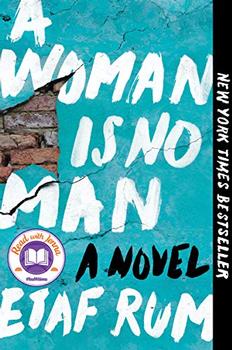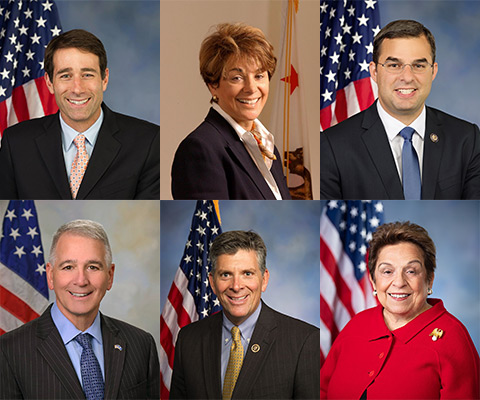Summary | Excerpt | Reading Guide | Reviews | Beyond the Book | Read-Alikes | Genres & Themes | Author Bio

Critics' Opinion:
Readers' Opinion:
First Published:
Mar 2019, 352 pages
Paperback:
Feb 2020, 368 pages
 Book Reviewed by:
Book Reviewed by:
Kim Kovacs
Buy This Book
This article relates to A Woman Is No Man
 The term "Arab" designates those who share a specific cultural, linguistic and in some cases political heritage. According to the Arab American Institute (AAI), the Arab world is comprised of the 22 countries that make up the Arab League, an organization formed in 1945 to represent the interests of Arabs worldwide. The nations (Algeria, Bahrain, Comoros, Djibouti, Egypt, Iraq, Jordan, Kuwait, Lebanon, Libya, Mauritania, Morocco, Oman, Qatar, Palestine, Saudi Arabia, Somalia, Sudan, Syria, Tunisia, United Arab Emirates and Yemen) had a combined population of 420 million people in 2018.
The term "Arab" designates those who share a specific cultural, linguistic and in some cases political heritage. According to the Arab American Institute (AAI), the Arab world is comprised of the 22 countries that make up the Arab League, an organization formed in 1945 to represent the interests of Arabs worldwide. The nations (Algeria, Bahrain, Comoros, Djibouti, Egypt, Iraq, Jordan, Kuwait, Lebanon, Libya, Mauritania, Morocco, Oman, Qatar, Palestine, Saudi Arabia, Somalia, Sudan, Syria, Tunisia, United Arab Emirates and Yemen) had a combined population of 420 million people in 2018.
The 2010 United States census estimated that there are some 1.7 million Arab Americans living in the country, although the AAI (among other sources) believes the number to be much higher at about 3.7 million citizens. Since Arab Americans aren't officially recognized as a federal minority, exact numbers aren't available. The census shows those of Lebanese descent making up about 30%, the most from any single country; followed by Egypt (11%), Syria (9%), Iraq (6%), Morocco (5%), Palestine (6%) and Jordan (4%). More than a quarter of those who responded to the census listed more than one country of origin.
85% of Arab Americans have graduated high school, which mirrors the national average, but more than 40% have a bachelor's degree and 17% have a post-graduate degree, compared with the U.S. averages of 21% and 9% respectively. The average income of Arab Americans is 22% higher than the national average.
Most sources indicate there have been three waves of Arab immigration into the United States. The first occurred between the 1870s and 1920s when about 110,000 immigrants of Arab origin entered the country. The majority were Christians from the Ottoman Empire province of Greater Syria (now Syria, Iraq, Lebanon, Palestine, Israel and Jordan). The typical arrival was young, male, single, illiterate and, like the majority of non-British/Irish immigrants of the time, spoke little to no English. They generally settled in large cities, where they had access to support from other Arabs, and often earned a living as peddlers (selling things like religious items, embroidery and baked goods). As time went on, they prospered; they married, saved money, invested in small businesses and established communities. Immigration was curtailed after 1924, when the U.S. government passed the Johnson-Reed Act, which put quotas on immigrants from various countries and barred those from Asia (including from what we refer to as the Middle East which is geographically West Asia) and the illiterate entirely.
A second wave began immediately after World War II. A great many Arabs were displaced during this period, particularly after the 1948 Arab-Israeli War (including more than half of the 1.3 million population of Palestine) but only the well-educated were able to emigrate to the U.S. Many of the 80,000 who did so between 1948 and 1966 were students who came to study in America, intending to return to their countries of origin, but ultimately remained in America because of better employment opportunities. This resulted in a "brain drain" from their home countries which lost significant numbers of their most skilled people.
The third and largest of the waves began arriving after the Arab-Israeli War in 1967, two years after the Immigration and Nationality Act abolished the U.S. immigration quota system. These arrivals were generally older and wealthier; they were predominantly Muslim, literate, bilingual and white-collar professionals (thus continuing the aforementioned brain drain in the Arab world). Migration has continued since then in waves triggered by periods of unrest that have seen many of the most educated flee. These events include the Lebanese Civil War of 1975 and the Israeli invasion of Lebanon in 1982; the Iran-Iraq War of 1980-1988, and the two U.S. invasions of Iraq. In addition, many Syrians and Yemenis have emigrated during this period; as well as over 100,000 Egyptians, almost half of them Coptic Christians.
Today, most Arab Americans were born in the United States, and are Christian (not Muslim, as is commonly assumed). There are many prominent Arab Americans across all professions including 10 current members of of the U.S. House of Representatives.
Image:
Top, left to right:
Garret Graves (Republican), Lebanese
Anna Eshoo (Democrat), Assyrian
Justin Amash (Republican/Independent), Palestinian/Syrian
Bottom, left to right:
Ralph Abraham (Republican), Lebanese
Darin LaHood (Republican), Lebanese
Donna Shalala (Democrat), Lebanese
Filed under Places, Cultures & Identities
![]() This "beyond the book article" relates to A Woman Is No Man. It originally ran in December 2019 and has been updated for the
February 2020 paperback edition.
Go to magazine.
This "beyond the book article" relates to A Woman Is No Man. It originally ran in December 2019 and has been updated for the
February 2020 paperback edition.
Go to magazine.





The Flower Sisters
by Michelle Collins Anderson
From the new Fannie Flagg of the Ozarks, a richly-woven story of family, forgiveness, and reinvention.

The House on Biscayne Bay
by Chanel Cleeton
As death stalks a gothic mansion in Miami, the lives of two women intertwine as the past and present collide.

The Funeral Cryer by Wenyan Lu
Debut novelist Wenyan Lu brings us this witty yet profound story about one woman's midlife reawakening in contemporary rural China.
Your guide toexceptional books
BookBrowse seeks out and recommends the best in contemporary fiction and nonfiction—books that not only engage and entertain but also deepen our understanding of ourselves and the world around us.